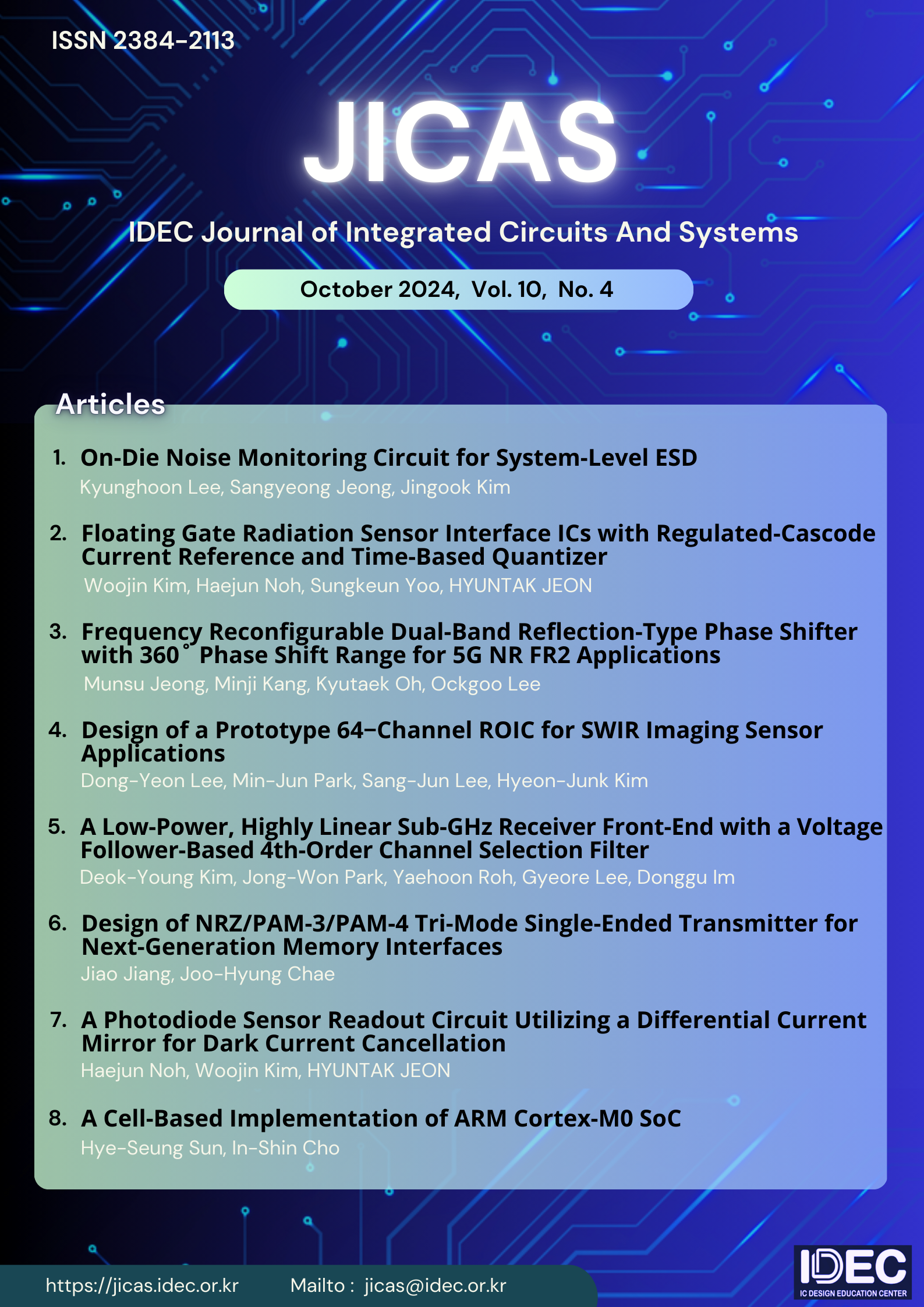A Low-Power, Highly Linear Sub-GHz Receiver Front-End with a Voltage Follower-Based 4th-Order Channel Selection Filter
Abstract
A low-power, highly linear sub-GHz receiver frontend designed for LPWAN IoT applications is presented, featuring a voltage follower-based 4th-order channel selection filter. The receiver front-end comprises a wideband single-todifferential (S-to-D) low-noise amplifier (LNA), an inphase/quadrature (I/Q) passive mixer, and the proposed advanced channel selection filter. The S-to-D LNA utilizes two cascaded inverters and a correction amplifier to achieve high gain, low noise, and high linearity while minimizing power consumption. The channel selection filter employs a novel design that combines the flipped voltage follower (FVF) and super source follower (SSF), enabling the implementation of a 4thorder filter without degrading the noise figure (NF). Implemented in 130-nm CMOS technology, the receiver achieves a conversion gain of approximately 30 dB, a doublesideband NF (NFDSB) of 3 dB at a cut-off frequency, and an output-referred third-order intercept point (OIP3) between +6.2 dBm and +7.7 dBm in the sub-GHz band, with a total power consumption of 8.9 mW from a 1.2 V supply.

